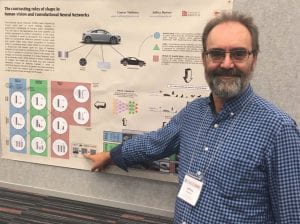
Funded under: H2020 | ERC-2016-ADG
Cordis: Cordis EU Research Results
OpenAire: Generalization in Mind and Machine
Data Management Plan: Download via DMPOnline
Can we use Deep Neural Networks to understand how the mind works? The 5-year ERC grant entitled “Generalisation in Mind and Machine” compares how humans and artificial neural networks generalise across a range of domains, including visual perception, memory, language, reasoning, and game playing.
Why focus on generalisation? Generalisation provides a critical test-bed for contrasting two fundamentally different theories of mind, namely, symbolic and non-symbolic theories of mind. Symbolic representations are compositional (e.g., Fodor and Pylyshyn, 1988) and are claimed to be necessary to generalise “outside the training space” (Marcus,1998, 2017). By contrast, non-symbolic models, including PDP models and most Deep Neural Networks reject the claim that symbolic representations are required to support human-like intelligence. So can non-symbolic neural networks generalise as broadly as humans? If so, this would seriously challenge a core motivation for symbolic theories of mind and brain. For recent discussion on this issue, see Bowers (2017) in Trends in Cognitive Science.
Our research team is carrying out a series of empirical and modelling investigations that explore the generalisation capacities of humans and machines across a wide range of domains. These studies are designed to:
- Focus on tasks that require symbols for the sake of generalisation.
- Focus on generalisation across a range of domains in which human performance is well characterised, including vision, memory, and reasoning.
- Develop new learning algorithms designed to make symbolic systems biologically plausible.